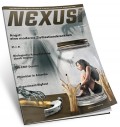29) http://www.EMFscientist.org
30) Milham, a. a. O., S. 49–50; Guy, A. W., Chou, C. K., Kunz, L. L., Crowley, J. und Krupp, J.: „Effects of long-term low-level radiofrequency radiation exposure on rats“ (Brooks Air Force Base, Texas: US Air Force School of Aerospace Medcine, TR-85-64 Final Report, 08.1985). Persönliche Korrespondenz mit Samuel Milham, MD, vom Februar 2017
31) Milham: „Dirty Electricity“, a. a. O., S. 71
32) a. a. O., S. xi
33) Havas, Magda, PhD: „The disease of ‚modern‘ civilization … neurasthenia“, 21.12.2014; http://tinyurl.com/h2p8gro
34) Rees, Camilla und Havas, Magda: „Public Health SOS: The Shadow Side of the Wireless Revolution – 110 Questions on Electromagnetic Pollution from a Forum at the Commonwealth Club of California“, (Wilmington, Delaware: Wide Angle Health, LLC, 2009), S. 7; http://tinyurl.com/hnt3w87
35) Hallberg, Örjan und Johansson, Olle: „Cancer Trends During the 20th Century“ in Journal of the Australasian College of Nutritional and Environmental Medicine 04.2002, 21(1): 3–8; http://iddd.de/umtsno/cancertrends.pdf
36) Stop UMTS!: „Skin Cancer FM“, 10.06.2014; http://tinyurl.com/jdhyksl
37) Milham, a. a. O., S. 54
38) a. a. O., S. 46, 45
39) Havas, M., PhD: „Breast Cancer and Occupational Exposure to Electromagnetic Fields. Report to the Workplace Safety and Insurance Appeals Tribunal“, 18.11.2008; http://tinyurl.com/jx2k9od
40) Havas, M.: „Dirty Electricity Elevates Blood Sugar Among Electrically Sensitive Diabetics and May Explain Brittle Diabetes“ in Electromagnetic Biology and Medicine (Electromagn Biol Med), 06.2008, 27(2): 135–146; http://tinyurl.com/zxqc8vo; http://tinyurl.com/25r94tz. Havas, M.: „Diabetes and Electrosensitivity“, 03.2010; http://tinyurl.com/hcb7g9f
41) Milham, a. a. O., S. 80
42) Milham, S.: „Historical evidence that electrification caused the 20th century epidemic of ‚diseases of civilization‘“ in Medical Hypotheses, 02.2010, 74(2): 337–345; http://tinyurl.com/j2t9aoq; http://tinyurl.com/he9lyn2
43) Milham: „Dirty Electricity“, S. xiv
44) Milham: „Historical evidence…“, a. a. O., S. 345
45) Milham: „Dirty Electricity“, a. a. O., S. xi
46) Milham: „Historical evidence…“, Ebd.
47) Milham: „Dirty Elextricity“, a. a. O., S. 76
48) Glaser, Zarach, R., PhD: „Bibliography of Reported Biological Phenomena (‚Effects‘) and Clinical Manifestations Attributed to Microwave and Radio-Frequency Radiation“, US Naval Medical Research Institute, Forschungsbericht Nr. 2, 20.04.1972; im Internet verfügbar: http://tinyurl.com/gq2pxb7
49) Wertheimer, N. und Leeper, E.: „Electrical Wiring Configurations and Childhood Cancer“ in American Journal of Epidemiology, 1979, 109(3): 273–284; http://tinyurl.com/zrrnw2m
50) Milham, a. a. O., S. xiii
51) Milham und Morgan, a. a. O., S. 586
52) Transienten sind große, sehr kurze Spannungsanstiege, Verzerrungen in der Sinuskurve. Sie treten auf, wenn elektrische Geräte ein- oder ausgeschaltet werden und dabei der elektrische Stromfluss unterbrochen wird. Transienten erzeugen ein hochfrequentes Signal. Dieses überlagert das 50–60-Hz-Signal und erzeugt dabei „parasitäre Schwingungen“, die über die 50–60-Hz-Schwingungen des Stromnetzes mit verbreitet werden.
53) Becker, Robert, O., MD: „Cross Currents: The Promise of Electromedicine, the Perils of Electropollution“ (New York: Tarcher, 1990) S. 206
54) Persönliches Gespräch mit Dave Stetzer im Jahr 2011
55) Maret, Karl, MD, MEng: „Report on the Travel to Almaty, Kazakhstan … September 4-12, 2003“, S. 14–15; http://tinyurl.com/hw9osy8
56) Head State Sanitary Physician of the Republic of Kazakhstan: „Permissible levels of high-frequency electromagnetic pollutions‘ voltage in a wires [sic] of industrial frequency alternating current: Sanitary-epidemiologic norms“, Nr. 69, 28.11.2003; http://tinyurl.com/hbjdq3u. Anmerkung der Autorin: Die GS-(Graham-Stetzer-)Einheit war noch nicht in Gebrauch, als diese Richtlinien veröffentlicht wurden. Unter Punkt 2, Nr. 5 sollte statt „50 mV“ nun „50 GS-Einheiten“ stehen.
57) Persönliches Gespräch mit Dave Stetzer im Februar 2017
58) Maret, a. a. O., S. 12
59) Milham: „Historical evidence…“, a. a. O., S. 337
60) Milham und Morgan, a. a. O., S. 585–586
61) WHO: „Electromagnetic fields and public health: Electromagnetic hypersensitivity“, Hintergrundpapier, 12.2005; http://tinyurl.com/opwdvr2
Die EMF-Seuche (Teil 2)
NEXUS Suche
Weitere Artikel dieser Ausgabe
- Nächster Artikel:
Experiment Bigfoot - Vorheriger Artikel:
Phönizisches Stonehenge in Amerika? - Zurück zur Ausgabe
Der Autor
NEXUS Magazin Artikel Feed
Alle Artikel-Veröffentlichungen auf nexus-magazin.de


 Der Elektrosmog-Forscher Samuel Milham kommt zu dem Schluss, dass die Epidemie der modernen Zivilisationskrankheiten – darunter Herz-Kreislauf-Erkrankungen, Krebs und Diabetes, aber auch Selbstmord – auf die Elektrifizierung zurückzuführen und damit verhütbar ist.
Der Elektrosmog-Forscher Samuel Milham kommt zu dem Schluss, dass die Epidemie der modernen Zivilisationskrankheiten – darunter Herz-Kreislauf-Erkrankungen, Krebs und Diabetes, aber auch Selbstmord – auf die Elektrifizierung zurückzuführen und damit verhütbar ist. Donna Fisher lebt in Brisbane, Australien. Sie ist Vorsitzende der „Donna Fisher Silent Fields Inc“, einer Nonprofitorganisation, die sich für ein Gesetz gegen schmutzige Elektrizität einsetzt. Donna Fisher hat bereits drei Bücher zu diesem Thema verfasst.
Donna Fisher lebt in Brisbane, Australien. Sie ist Vorsitzende der „Donna Fisher Silent Fields Inc“, einer Nonprofitorganisation, die sich für ein Gesetz gegen schmutzige Elektrizität einsetzt. Donna Fisher hat bereits drei Bücher zu diesem Thema verfasst.
Kommentar schreiben
Das Kommentieren wurde für diesen Beitag unterbunden.